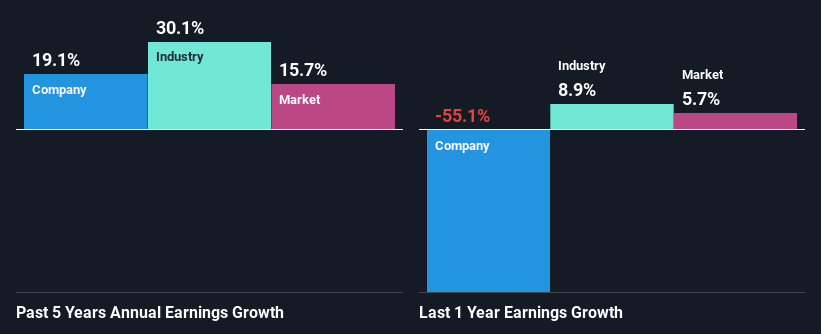NVIDIA Corporation's (NASDAQ:NVDA) Stock Is Going Strong: Is the Market Following Fundamentals?
NVIDIA's (NASDAQ:NVDA) stock is up by a considerable 37% over the past three months. Since the market usually pay for a company’s long-term fundamentals, we decided to study the company’s key performance indicators to see if they could be influencing the market. Specifically, we decided to study NVIDIA's ROE in this article.
Return on equity or ROE is a key measure used to assess how efficiently a company's management is utilizing the company's capital. Put another way, it reveals the company's success at turning shareholder investments into profits.
View our latest analysis for NVIDIA
How Do You Calculate Return On Equity?
The formula for return on equity is:
Return on Equity = Net Profit (from continuing operations) ÷ Shareholders' Equity
So, based on the above formula, the ROE for NVIDIA is:
20% = US$4.4b ÷ US$22b (Based on the trailing twelve months to January 2023).
The 'return' is the income the business earned over the last year. Another way to think of that is that for every $1 worth of equity, the company was able to earn $0.20 in profit.
What Has ROE Got To Do With Earnings Growth?
We have already established that ROE serves as an efficient profit-generating gauge for a company's future earnings. Depending on how much of these profits the company reinvests or "retains", and how effectively it does so, we are then able to assess a company’s earnings growth potential. Generally speaking, other things being equal, firms with a high return on equity and profit retention, have a higher growth rate than firms that don’t share these attributes.
NVIDIA's Earnings Growth And 20% ROE
To start with, NVIDIA's ROE looks acceptable. Especially when compared to the industry average of 15% the company's ROE looks pretty impressive. This probably laid the ground for NVIDIA's moderate 19% net income growth seen over the past five years.
Next, on comparing with the industry net income growth, we found that NVIDIA's reported growth was lower than the industry growth of 30% in the same period, which is not something we like to see.
Earnings growth is an important metric to consider when valuing a stock. What investors need to determine next is if the expected earnings growth, or the lack of it, is already built into the share price. This then helps them determine if the stock is placed for a bright or bleak future. If you're wondering about NVIDIA's's valuation, check out this gauge of its price-to-earnings ratio, as compared to its industry.
Is NVIDIA Using Its Retained Earnings Effectively?
In NVIDIA's case, its respectable earnings growth can probably be explained by its low three-year median payout ratio of 7.1% (or a retention ratio of 93%), which suggests that the company is investing most of its profits to grow its business.
Moreover, NVIDIA is determined to keep sharing its profits with shareholders which we infer from its long history of paying a dividend for at least ten years. Our latest analyst data shows that the future payout ratio of the company is expected to drop to 2.3% over the next three years. The fact that the company's ROE is expected to rise to 49% over the same period is explained by the drop in the payout ratio.
Summary
Overall, we are quite pleased with NVIDIA's performance. Specifically, we like that the company is reinvesting a huge chunk of its profits at a high rate of return. This of course has caused the company to see a good amount of growth in its earnings. Having said that, looking at the current analyst estimates, we found that the company's earnings are expected to gain momentum. To know more about the company's future earnings growth forecasts take a look at this free report on analyst forecasts for the company to find out more.
Have feedback on this article? Concerned about the content? Get in touch with us directly. Alternatively, email editorial-team (at) simplywallst.com.
This article by Simply Wall St is general in nature. We provide commentary based on historical data and analyst forecasts only using an unbiased methodology and our articles are not intended to be financial advice. It does not constitute a recommendation to buy or sell any stock, and does not take account of your objectives, or your financial situation. We aim to bring you long-term focused analysis driven by fundamental data. Note that our analysis may not factor in the latest price-sensitive company announcements or qualitative material. Simply Wall St has no position in any stocks mentioned.
Join A Paid User Research Session
You’ll receive a US$30 Amazon Gift card for 1 hour of your time while helping us build better investing tools for the individual investors like yourself. Sign up here

